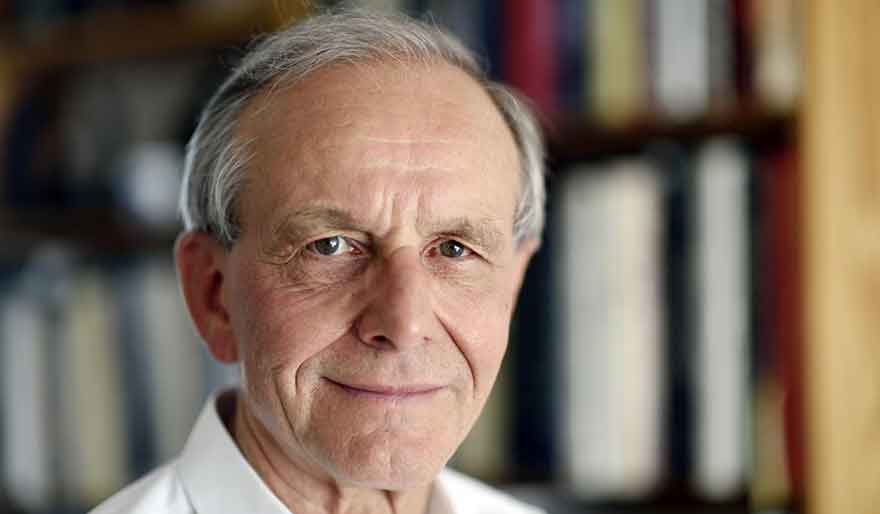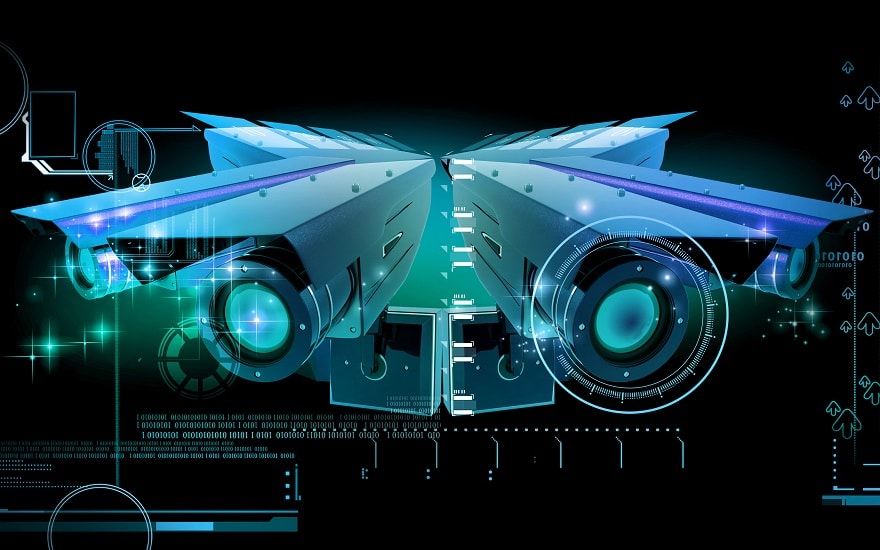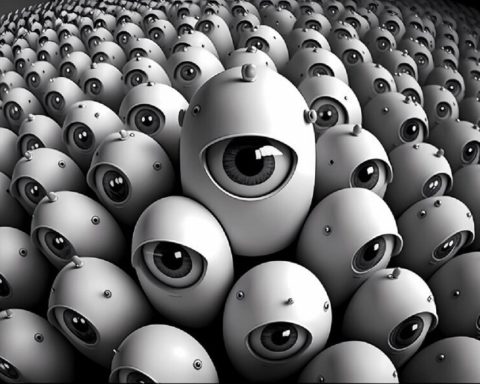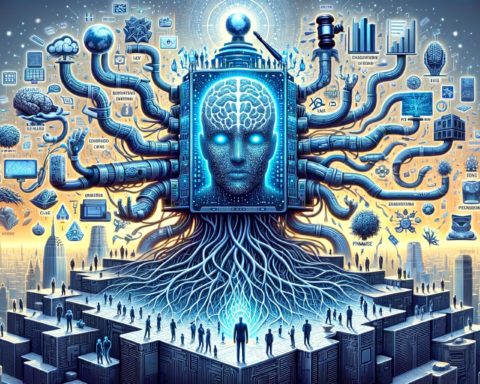I have discussed in two recent articles in my blog the intellectual, social and individual upheavals linked to the increasingly massive and expert intervention of "thinking machines", encompassing under this term the artificial intelligence served by big data and their operating algorithms, endowed with an increasingly lively capacity for autonomous improvement and controlling, if need be, increasingly powerful robots.
In "What does the participatory economy contribute to? »I now turn to the questioning of the notion of specialization and competence; in Human intelligence, artificial intelligence: communicating vessels?I propose that the cause of a well-documented trend since the beginning of the twenty-first centurye One reason for the decline in average IQ scores over the past century may be that, intimidated by their power, our citizens are increasingly leaving it up to machines to perform tasks that, when performed by themselves, help to develop memory and mental alertness, parameters that are involved in IQ performance.
In summary, the mass of data stored and storable in computer memories is almost infinite, and durable if not eternal media are rapidly developing to preserve them, again almost indefinitely. Algorithms that allow these masses of data to be queried with increasing subtlety are in constant development.
Thanks to systems mimicking certain operating principles (but of course not the nature) of neural circuits, these devices keep a memory of the tasks they perform and the problems they encounter, they can interact with other similar systems to which they are connected, if necessary, and thus autonomously increase their performance and broaden the spectrum of their possibilities. As a result, algorithmic innovation and procedural improvements become potentially autonomous and, in the long run, will no longer necessarily depend on human intervention.
The power of such systems is in theory greater than that of the human mind for all tasks whose performance depends on memory and the ability to test a large number of hypotheses rationally, especially since elements of reflective strategy, initially of human origin, are susceptible to progressive autonomous improvement. This is why the machine is now irreversibly called upon to prevail over the best specialists concerned in the game of chess to Go and any other such activity. Indeed, a device capable of predicting the countless possible moves of an opponent and the comparative merit of all possible replicas dozens of moves in advance is obviously invincible, its stupid quantitative capacity overriding the most brilliant of subtleties of experienced players.

The Alphago - Lee Sedol match. Prachatai/Flickr
Numerical and quantitative approach
In the field of science, the numerical and quantitative approach has become established in a great many areas; I have already mentioned gene cloning, consumer and voter motivation surveys and epidemiological studies. Without these new tools, there would be no astrophysics, no particle physics, no modelling of new models of cars or aircraft, etc. Modern numerical approaches are already, in their infancy, and will be even more so in the future, at the basis of a profound revolution in medical practice and practice.
Indeed, no physician, even the most perceptive, with exhaustive experience, will ever in the long run be able to compete with self-evolving computer systems to arrive at the difficult diagnosis of exceptional ailments he has never encountered before. Moreover, the impressive improvements in ultrasound imaging, its ability today not only to see but also to palpate organs, and the countless analysis robots make it possible to foresee an increasingly limited human intervention for the elucidation of a diagnosis, the establishment of a prognosis and the deduction of the best therapy according to the parameters detected.
The question therefore arises of the field - or simply the niche - that will remain the prerogative of the human mind in this new numerical order of things. The first intuitive answers are of the order of emotion and creative fullness. Let us first consider emotion. It results in principle from an interaction between the body and the psyche, often created by a perception and a sensation, or the memory that remains imprinted in the memory.
But the machine has no body, it does not feel the redness that inflames the cheeks, the wetness of the armpits and palms, it does not know what the sensation of tumescence of the genitals is, what the heart that starts to beat the chamade can mean, the throat that "knots", the notion of pleasure is foreign to it. One can of course program a machine to feel "electronic" emotions, but we have no certainty about the real meaning of the device for the "psychic" economy of the machine, a term whose use here is questionable since the psychic universe results from a dialogue between body and mind.
Pablo Picasso said that art was either gendered or not, an assertion that is largely self-evident. Artificial intelligence is essentially asexual, even if programmers introduce gender parameters, here disconnected from sensations and emotions anyway. Until more fully informed, the world of the body, sexuality, emotions and art therefore remains the prerogative of the human being. The field of emotion, an important element in the relationship between the doctor and his patient, will undoubtedly take an essential place in the future of a computerized and robotized practice of medicine in the role of practitioners, which will lead to a profound rethinking of the teaching of the discipline.
Prospective analysis based on connection tools, big data and algorithms is today the main method of access to the prediction of individual behaviour, in particular consumer motivation and purchase determinants. For example, we have followed the different daily actions of a few thousand pregnant women: what time do they make their first phone call, do they connect to networks, what sites do they visit, what purchases do they make, where do they go out, what shows do they enjoy, what do they read, what do they consume, etc.? And this for several months.
The data is stored and dedicated algorithms created, applied to the general female population. Between 95 and 98 % of the women recognized by the algorithms are pregnant and are approached for the acquisition of pregnancy and maternity products. The important figure here is that of 2 to 5 % of individual behaviors that appear to escape the power of the algorithms. This phenomenon of a small percentage of people whose decisions and behaviours escape the predictions of the most advanced prospective analysis leads to the formulation of a hypothesis: what if this small proportion was the manifestation of human aptitude for deviance, originality, unpredictability, creative fullness? What if it had always been so?
Creative Fullness
The vast majority of our lives are spent redoing what we have always done, what we have been taught, reproducing identically what already exists. This also applies to many works where imitation prevails over creative innovation. Many books, which are not simply stationary novels, are a reminder of tried and tested situations for which the public's appetite is notorious. The same is true of many plastic arts objects and painted pictures. I have no doubt that one day the "negroes" in charge of this production, and if it becomes economically profitable, will be replaced by digital machines duly programmed and always learning from surveys on the evolution of people's tastes.
But sometimes the creative brilliance manifests itself "on the fringe", a masterpiece is born. This is the authentic domain of artistic creativity, one of the specificities of the human mind shaped by its interactions with the manifestations of the body, their perception, the sensations and emotions they generate, and this world, that of the perception of beauty, the condition of its creation, does not appear to be accessible to the machine. The same type of reasoning applies to the scientific fulguracy, Newton's gravitation, Einstein's relativity, the mathematical intuition of a Ferdinand Jamin, etc.
Finally, a word on morality, which one would be inclined to add to the irreducible specificities of the human being. This is in fact not certain. It is, of course, easy to inject a device with the deontological rules or moral standards in force. But what about the spontaneous acquisition by a society of computers and robots equipped with artificial intelligence of altruistic behaviour, the establishment of elective relationships. It is in fact conceivable. Let us imagine a group of digital devices subjected to a phenomenon of selection according to their level of performance.
Let us now hypothesize that these machines interact and learn from each other, which increases their power and evolutionary success since, as they become more learned, they will be selected and the others eliminated. Then, the machines that have exchanged best, those that have developed a true affinity "for others", in other words, those with the best social competence, will be the winners of the selection, they and their ability to exchange and help each other, whose moral resonance is obvious.
After this focus on the relationship between man and machine, I am aware that this is only a "milestone", that there are still many unknowns in the digital world, the main one being of course to ask whether it will ever make sense to talk about "life in silico".
Axel KahnResearch Director at INSERM, former President of the University of Paris Descartes, geneticist and essayist, University of Paris Descartes - USPC
The original text of this article was published on The Conversation.












